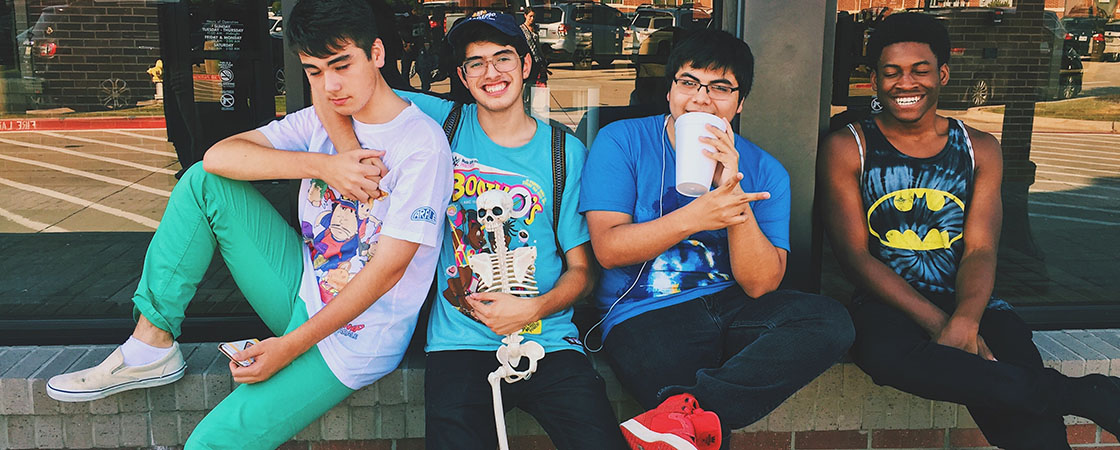This season is likely to bring about heightened emotions and behaviors from our student body. As we navigate the election season, higher rates of COVID-19, continued quarantine, and head into winter, we want to be prepared to create safe, inclusive, and engaged communities for our students.
Using the framework for social-emotional competencies created by the Collaborative for Academic, Social, and Emotional Learning (CASEL), below are some suggestions for how to best support your students during this complicated time and leverage the opportunities to help them develop socially and emotionally.
We wrote this for our teachers and staff to use with our Fusion Academy students, but these can be helpful as you engage with your child at home, so we wanted to share them with you.
Self-Awareness
Supporting students to better understand their emotional disposition, needs, and values, including how each of these impacts their behavior.
Suggestions:
• Engage students in conversations prior to the election that help them anticipate their feelings. Be honest with students and acknowledge competing and challenging emotions.
• Give your students the opportunity to develop emotional language by using the color wheel of emotions. It may be easier for students to identify with a color as a gateway to expressing their emotions versus labeling them with terms. Find the color wheel of emotions here.
• Remind students of their skills, competence, and resilience. Prompt students to reflect on other times in the past when they have had to: wait patiently for an outcome, wish an outcome was different, manage their feelings in the unknown, and ask them how they got through it.
• Once students have been able to identify their emotions, ask what they might need from you, their community, and/or themselves. Help your students focus on what is most in their control.
Self-Management
Supporting students to manage their thoughts and behaviors in order to achieve more prosocial ways of being. This also includes opportunities to reflect on the impacts of their behavior and a more constructive way forward.
Suggestions:
• Help students to identify a few coping skills when they’re starting to feel dysregulated (taking a walk, squeezing a stress ball, writing, listening to music, etc.).
• Utilize this Behavior Mapping worksheet for students who have more significant behavioral challenges and require either more frontloading or reflection on their behaviors.
• Encourage students to use “I” language when sharing their viewpoints and feelings.
• Provide spaces (emotional and physical) for silence. This allows students to reflect and process.
• Talk through scenarios that might cause students to impulsively react – discuss different ways of responding to various scenarios that may or may not occur. In terms of self-management, compliance is not the goal; teaching skills and priming healthier responses is. (Example: News story comes out that prompts an emotional reaction: How might my impulses lead me to react vs. how might I be able to react in a more mindful way? (lashing out at peers who disagree with me vs. taking space to cool down, breathe, and journal).
Social-Awareness
Supporting students in being aware of their environment, including those within it, and to develop perspective-taking, compassion, and cultural sensitivity.
Suggestions:
• Provide prompts to students that expand their current frame of thinking:
• What are 2-3 ways that other people might be thinking about this?
• What are your life experiences that inspire you to think this way? How might the life experiences of others differ and impact their opinions?
• If the outcome was different, how might I behave or want others to behave?
• Facilitate a discussion about how the US is a diverse nation that represents many viewpoints, including many that don’t squarely fit into a political affiliation.
• Teach students to look for “the helpers” – it’s a powerful reminder that there’s a lot of good in humanity to balance “bad news”.
Relationship-Building
Supporting students in communicating respectfully and establishing healthy connections with those who think differently.
Suggestions:
• When emotions are high, it can be challenging to listen to someone’s thoughts that are different from your own. Teach students an active listening skill like RASA: Receive what someone is saying without interrupting (avoid thinking about your retort), Appreciate that they shared (acknowledging they were heard), Summarize their thoughts (get on the same page), and Ask a question (get curious).
• Establish ground rules for communal spaces: here is a document to help.
• Remind students that conflict is a normal part of life and can lead to new understandings when respect is maintained. If things get heated, teach students to “agree to disagree”.
• Ask students to engage in dialogue as opposed to debate. Dialogue can feel “lower stakes”, can include more than two points of view, and doesn’t reinforce dichotomies.
• In times of grief, disappointment, or celebration, it’s helpful to pull “community” closer together for support. Have students identify their community web (family, friends, teachers, online gaming group). Ask students how they can be intentional about connecting with them during this time.
Responsible Decision-Making
Supporting students to make thoughtful choices that encourage personal safety, as well as aiming towards building connections versus creating division.
Suggestions:
• Similar to the “ground rules” above, you can also create norms and agreements that build a sense of safety for students. Watch this two-minute video for examples.
• Discuss boundaries regarding when and where conversations should happen in order to avoid saturating our common areas with political content. These boundaries can help students with their decision-making.
•Ask students to follow the guidelines for bias-free communication, found here.
• Help students channel their emotional energy into meaningful action-oriented projects: taking action through community service, fundraising, and civic engagement
• Introduce the iceberg diagram to allow students to explore challenging topics with numerous layers: what’s above the surface that we see, and what’s below the surface that we don’t?








